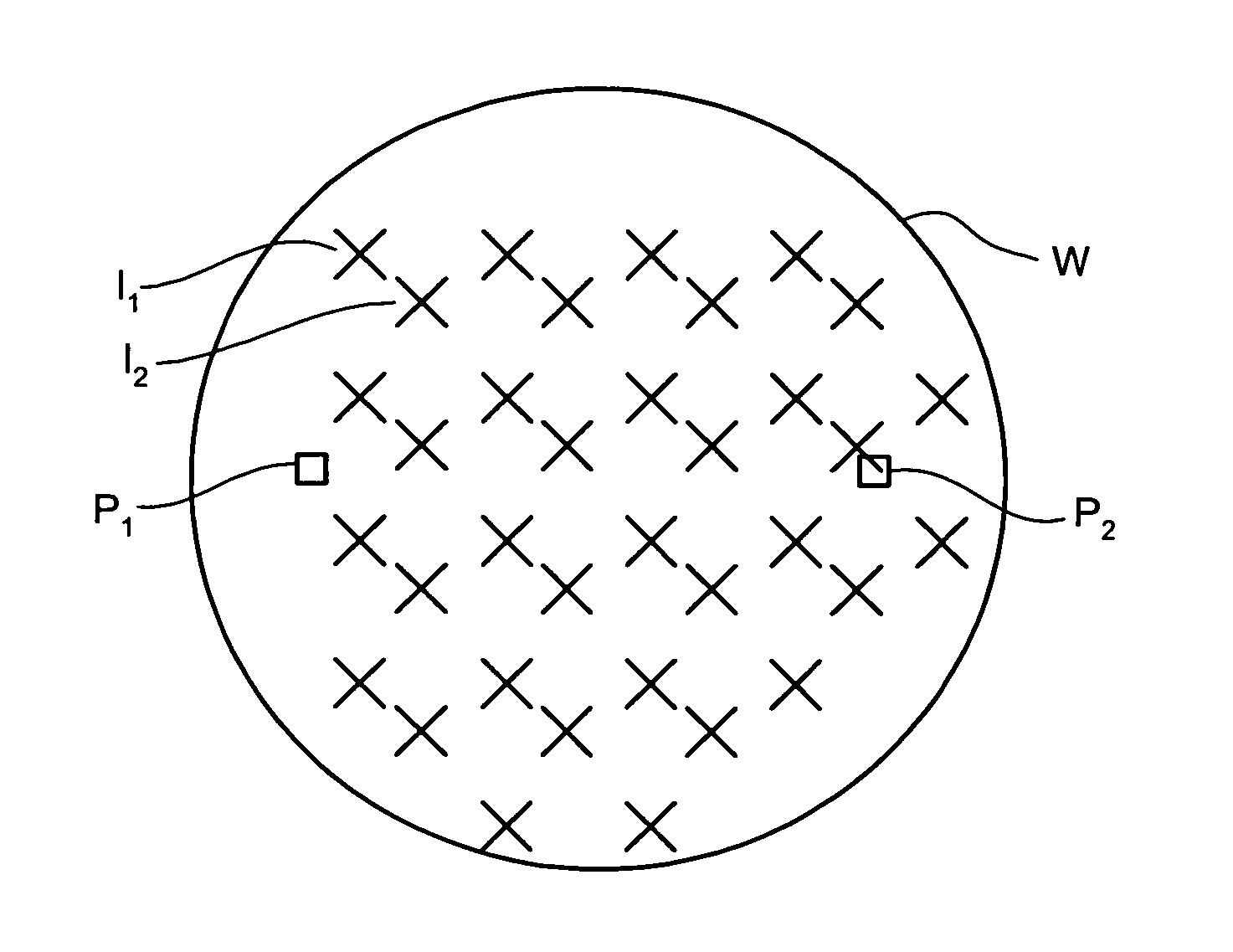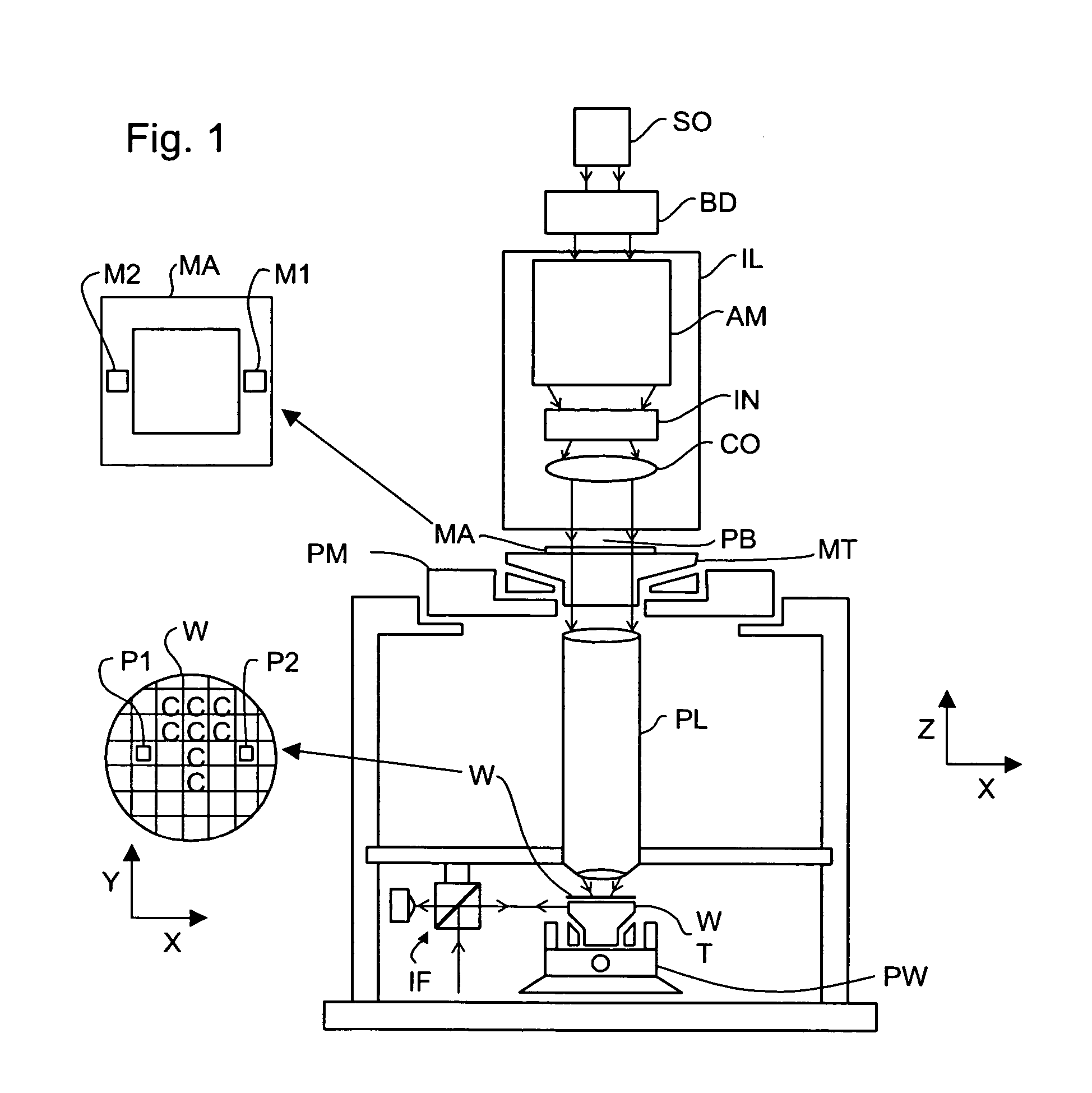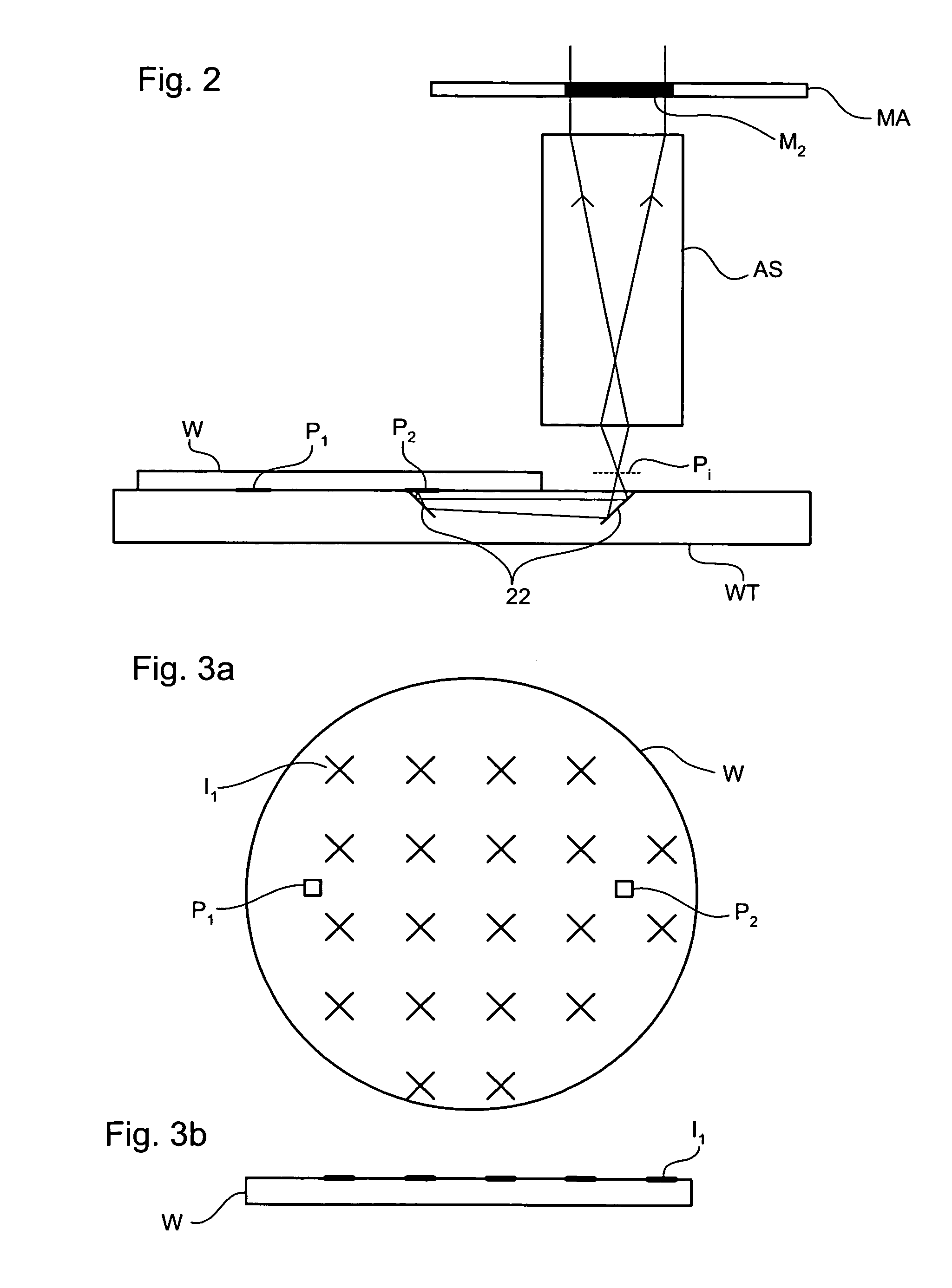Alignment method, method of measuring front to backside alignment error, method of detecting non-orthogonality, method of calibration, and lithographic apparatus
a technology of alignment error and alignment method, applied in the field of lithographic apparatus, can solve the problem of position error nevertheless remaining, and achieve the effect of accurate calculation and compensation
- Summary
- Abstract
- Description
- Claims
- Application Information
AI Technical Summary
Benefits of technology
Problems solved by technology
Method used
Image
Examples
third embodiment
[0075]In a third embodiment, a transparent substrate W is etched with marks e1, e2, e3 and e4, each having mirror symmetry. As shown in FIG. 6 the line joining the centers of e3 and e4 is substantially perpendicular to the line joining the centers of e1 and e2.
[0076]An alignment system AS is then used to detect the location of e1. The substrate table WT is then moved to bring e2 to the focal point of the alignment system AS and the location of e2 detected. Next, the substrate table WT is moved to bring e3 to the focal point of alignment system AS and the location of e3 detected. This process is repeated again for mark e4.
[0077]As the directions in which the substrate table moves are not exactly orthogonal, the detected locations of e1, e2, e3 and e4 may lie along non-orthogonal lines as shown in FIG. 7A. This gives an indication of the non-orthogonality of the movement of the substrate table. However, if the line joining e3 and e4 on the substrate and the line joining e1 and e2 on ...
fourth embodiment
[0088]In a fourth embodiment, one layer of a device is printed at a plurality of locations, f1, f2, f3, f4 and f5, on a substrate as shown in FIG. 8. The substrate is then turned over and aligned using front to backside alignment optics and an alignment system AS. For each first layer of the device, f, a second layer of the device, g, is printed on the other side of the substrate. However, for each first layer of the device the second layer is offset in the y direction by a different amount. For example, the first second device layer, g1, is offset from the first first device layer, f1, by −200 nm. The second device layer, g1, is offset from the second first device layer by −100 nm. The third second device layer, g1, is not offset from the third first device layer. This pattern continues for all the devices and is shown in FIG. 9A.
[0089]The substrate is then removed from the lithographic apparatus and the performance of each of the five devices is tested and quantified. The performa...
fifth embodiment
[0092]In a fifth embodiment, a glass plate 31 with a reference mark 30 etched in aluminum is placed in the object window of front-to-backside alignment optics 35 as shown in FIG. 11. As shown in FIG. 12 the reference mark 30 is symmetrical in both the x and y directions. Alignment system AS detects reference mark 30 from above and through the front-to-backside alignment optics to determine the imaged optic vector. If the apparatus needs recalibrating at a later time the same glass plate can be used for calibration again.
[0093]Any discrepancies in the reference mark 30 between being read from above and being read from below (through front-to-backside alignment optics) can be determined using conventional calibration methods. The height of the substrate table may need to be adjusted between these two readings to ensure that the reference mark 30 is at the focal point of alignment system AS.
[0094]Alternatively, the reference mark 30 could be etched into the object window of front to ba...
PUM
| Property | Measurement | Unit |
|---|---|---|
| wavelength | aaaaa | aaaaa |
| wavelength | aaaaa | aaaaa |
| wavelength | aaaaa | aaaaa |
Abstract
Description
Claims
Application Information
 Login to View More
Login to View More - R&D
- Intellectual Property
- Life Sciences
- Materials
- Tech Scout
- Unparalleled Data Quality
- Higher Quality Content
- 60% Fewer Hallucinations
Browse by: Latest US Patents, China's latest patents, Technical Efficacy Thesaurus, Application Domain, Technology Topic, Popular Technical Reports.
© 2025 PatSnap. All rights reserved.Legal|Privacy policy|Modern Slavery Act Transparency Statement|Sitemap|About US| Contact US: help@patsnap.com



